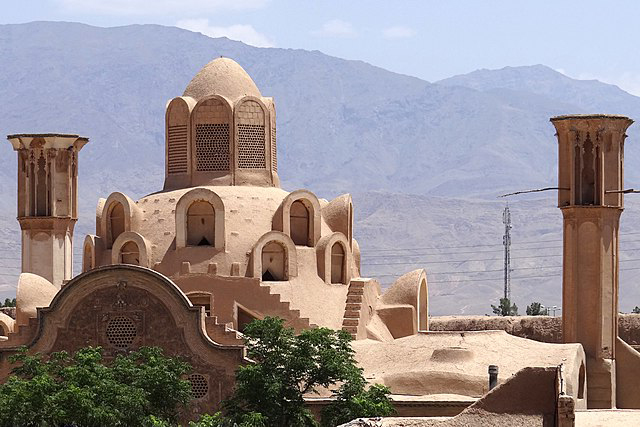
Traditional indigenous architecture of Iran is one of the richest and most diverse architectural styles in the world, reflecting the culture, climate, and ancient history of this land. Due to its harmony with the environment and optimal use of natural resources, it is recognized as one of the sustainable models in building design and construction.
Characteristics of Traditional Indigenous Architecture in Iran
Traditional Iranian architecture is shaped based on the climate and geographical conditions of each region and includes unique features observed in the design of houses, caravanserais, baths, and mosques. Some prominent characteristics of this architecture include:
1. Use of Local Materials: Utilization of local materials such as mud bricks, clay, stone, and wood.
2. Climate-Appropriate Design: In hot and dry regions, buildings are constructed with thick walls, central courtyards, and wind catchers. In colder regions, sloped roofs and insulated walls are common.
3. Central Courtyard: The central courtyard serves as a key element in traditional Iranian homes, playing a crucial role in natural ventilation and creating a tranquil space.
4. Architectural Decorations: Use of tile work, stucco, and geometric and arabesque patterns to enhance the beauty of spaces.
Prominent Examples of Traditional Indigenous Architecture in Iran
1. Borujerdi House in Kashan:
This house, with its central courtyard, wind catcher, and beautiful decorations, is a prominent example of traditional architecture in hot and dry regions.
2. Jameh Mosque of Isfahan:
This mosque, with its complex structure and beautiful artistic decorations, is an example of traditional and religious architecture in Iran
3. Abbasi Caravanserai:
Traditional Iranian caravanserais, with their suitable design for accommodating travelers and storing goods, demonstrate intelligent thinking in indigenous architecture.
Influence of Traditional Indigenous Architecture on Contemporary Architecture
Despite rapid changes in contemporary architectural styles, the influence of traditional Iranian architecture is still observed in modern building designs. Utilization of sustainability principles, natural ventilation, and local materials are among these influences.
Conclusion
Traditional indigenous architecture of Iran, by utilizing local knowledge and harmonizing with the environment, has created a sustainable and beautiful model for building design. Preserving and revitalizing this architectural heritage not only helps maintain the country’s cultural identity but also offers an effective solution for addressing the challenges of contemporary architecture.


No comments yet.